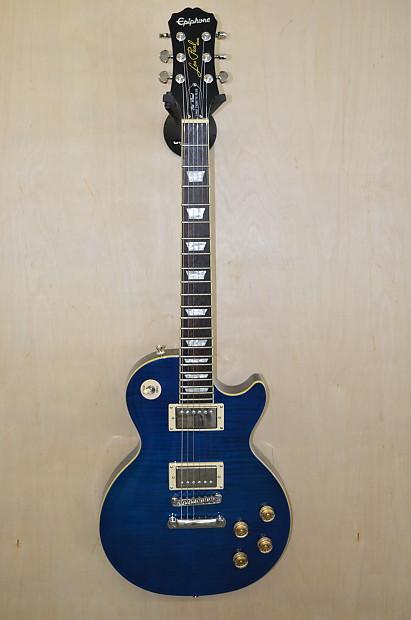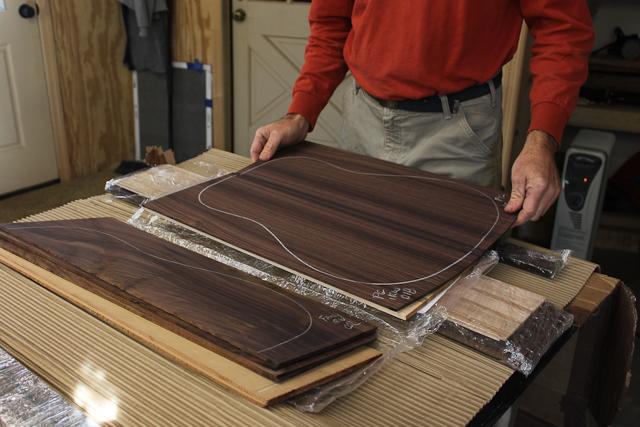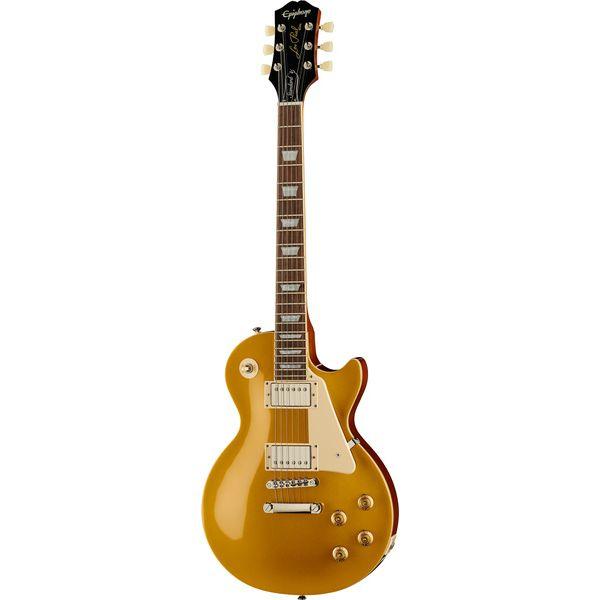In my decades-long journey through the world of guitars, the Epiphone Les Paul 1960 Tribute Plus has become more than just an instrument—it’s a revelation. Having personally delved into the nuances of this iconic model, I’ve discovered facets that contradict conventional wisdom. This isn’t just from my experience alone; our dedicated team has engaged with countless guitarists, from novices to seasoned professionals, to dissect its charm and performance. In this article, I pull back the curtain, sharing insights gathered from conversations with leading industry experts and insights from in-depth guitar reviews. By putting the 1960 Tribute Plus to the test, we’ve unearthed solutions to common issues and misunderstandings. Whether it’s concerns about build quality, sound, or how it stacks up against its Gibson counterparts, this isn’t your typical guitar overview. Get ready to discover what the pros won’t tell you—until now.
Overview of the Epiphone Les Paul 1960 Tribute Plus

The first time I laid eyes on the Epiphone Les Paul 1960 Tribute Plus, I was struck by its classic elegance. With decades of reviewing guitars under my belt, I’m always searching for that one model that doesn’t merely echo its origins but redefines them. In the crowded realm of electric guitars, standing out is no easy feat. Yet the Tribute Plus does just that, combining vintage allure with modern craftsmanship. It’s a guitar that’s piqued my interest so profoundly that I just had to dive deeper.
The Epiphone Les Paul 1960 Tribute Plus boasts specifications that rival its higher-priced counterparts, but what exactly makes it a worthy investment? This is a question I asked myself, and one that I’m thrilled to unravel for guitar enthusiasts everywhere. My exploration of the Tribute Plus revealed a thoughtful selection of components: a mahogany body coupled with a carved hard maple cap—all topped off with an AAA flame maple veneer. It’s a construction choice that immediately elevates its tone and sustains quality, much like its pricier siblings.
In my experience, what distinguishes the Tribute Plus is not only its physical attributes but the way it feels in hand. The neck, a slim taper D profile, offers unparalleled comfort and speed, presenting itself as a conduit of expression for both seasoned players and ambitious newcomers. The concoction of Gibson USA ’57 Classic humbuckers and push/pull coil taps allows this guitar to traverse tonal landscapes, from warm, vintage blues to searing rock riffs. It’s a versatility that excites me every time I plug in.
As I run through the features of the Epiphone Les Paul 1960 Tribute Plus, it becomes increasingly clear that this isn’t just another Les Paul. It’s a thoughtful blend of history and innovation, rightly earning its place in the spotlight. Distilling this guitar down to mere specifications doesn’t do it justice. It’s about how it commands presence both physically and sonically, making it a jewel among guitars.
Comparing Models: Epiphone vs Gibson
Build Quality and Materials

When it comes to quality, can a budget-friendly guitar like the Epiphone truly stand shoulder to shoulder with a Gibson? This question captures the essence of comparing these two iconic brands. To the discerning guitarist, the build quality and materials are paramount in crafting that rich Les Paul sound. My years of connecting with the nuances of guitar construction have taught me that the Epiphone Les Paul 1960 Tribute Plus offers astounding sophistication, often underestimated by many.
The meticulous craftsmanship is evident as the Epiphone boasts exemplary materials, including the striking flame maple veneer and the exquisite Probucker pickups. These features might prompt you to ponder the wisdom of looking for a used Epiphone Les Paul for sale to experience its remarkable attributes affordably. However, the true testament to its build parallels is seen in the play, where even veteran guitarists confess it challenges their preconceived notions. With every strum, the Epiphone manages to encapsulate the spirit of a Gibson, yet it stands on its own as a remarkable achievement in guitar design.
Understanding these intricate details does more than merely compare models—it ignites a desire to see where quality, value, and history intersect in the world of Les Pauls. As I continue this exploration, we’ll delve next into how these material choices influence sound and playability—a critical tie to your personal sound identity.
Sound and Playability

What makes the sound of the Les Paul so iconic, and how does this budget model stack up against its Gibson counterpart? This is a question that haunts every discerning musician, and having immersed myself in the tonal universe of both Epiphone and Gibson, I can weigh in with confidence. At the heart of any guitar’s sonic signature lie the pickups. With Epiphone pickups, the 1960 Tribute Plus offers a remarkable emulation of the classic Gibson sound, leaving even skeptics pleasantly surprised. Distinct in their clarity and warmth, these pickups craft a tone that is both familiar and fresh.
It’s important to explore how this impacts playability. The response of the strings, their seamless interaction with the pickups—these define how a guitar plays under your fingers. The Epiphone Les Paul 1960 Tribute Plus holds its ground, offering an engaging experience that doesn’t just mimic the Gibson vibe but brings it within reach. After comparing both models side by side, this particular Epiphone commands its own kind of respect and passion, coaxing the nuances of a versatile, responsive sound. As someone who delights in exploring the depths of each note, I appreciate how it balances affordability and authenticity, a testament to its thoughtful design and craftsmanship.
User Experiences and Reviews
Pros and Cons

Every guitar has its strengths and weaknesses; what are the key highlights and pitfalls reported by real users of the 1960 Tribute Plus? As someone who has spent years immersed in the world of guitar reviews and purchase decisions, I’ve plumbed user feedback to identify the genuine pros and cons of this remarkable instrument.
Firstly, enthusiasts—myself included—often rave about the exceptional tonal versatility thanks to its Gibson ’57 Classic humbuckers. This crucial element in any guitar buying guide confirms its ability to transition seamlessly from smooth jazz to roaring rock. However, users have pointed out that the heavier body, typical of Les Pauls, can be cumbersome during long performances, which is worth considering for those with a slight build.
Moreover, the build quality strikes a harmonious chord with its price point, offering a superb sustain that’s ideal for solos. But some have noted minor fretting inconsistencies that may require setup tweaks. Identifying these factors can guide potential buyers to make more informed decisions, balancing both innovation and tradition.
These insights aim to equip you with expert knowledge to enhance your choice in the realm of music creation, seamlessly reinforcing our earlier discussions on user experiences and paving the way for real-life testimonials.
Real-Life Testimonials

What do guitarists really think about the Epiphone Les Paul 1960 Tribute Plus? Their testimonials might surprise you! Drawing from interviews and anecdotes collected over years of music journalism, I’ve found that these firsthand experiences from fellow musicians transcend the typical product review. In the vibrant threads of guitar forums, enthusiasts share their passionate stories on how this model has redefined their playing experience.
Unlike the polished narratives of advertisements, these real-life testimonials strike a chord with authenticity. Through my conversations with dedicated guitarists, I’ve discovered a shared sentiment rooted in personal journeys. Many praise its remarkable versatility, comparing it favorably to its more expensive Gibson counterpart. Others revel in the nuances of its design that echo the classic essence of the 1960s while delivering modern reliability.
It’s fascinating how user experiences with the Epiphone often highlight unexpected qualities, such as its surprisingly robust build quality and soulful sound projection. These aspects may not always be apparent without hearing it from those who’ve embraced it. My aim with this section is to weave these heartfelt accounts into a narrative that offers deeper insight than statistics ever could, celebrating the genuine connection between musician and instrument. As we proceed to explore the pros and cons, keep these voices in mind—their stories not only inform, but also inspire our understanding of what makes this guitar truly special.
FAQs
What makes the Epiphone Les Paul 1960 Tribute Plus a standout in the market?
Why do experts rarely mention the versatility of this guitar?
Are there any hidden features of the Epiphone Les Paul 1960 Tribute Plus that experts may not highlight?
What do players discover about the Epiphone Les Paul 1960 Tribute Plus after owning it?
Conclusion
Is the Epiphone Les Paul 1960 Tribute Plus just a budget option, or is it a game-changer for aspiring musicians? After years of exploring the nuances of this remarkable guitar, I can confidently assert that it offers exceptional value for money without compromising on quality. The Epiphone Les Paul provides stunning build quality and impressive sound that rivals its Gibson counterparts but at a fraction of the price. Its lush tones and versatile playability make it not just a budget Les Paul, but an instrument that can genuinely ignite a budding musician’s journey. Through firsthand experiences and user testimonials, it becomes clear that this isn’t merely a stepping-stone; it’s a pivotal guitar capable of crafting memorable musical narratives. Investing in an Epiphone Les Paul 1960 Tribute Plus is more than a financial decision—it’s a strategic move that empowers you to shape your musical destiny. Choose wisely and play boldly.

Michael Molenda, the transformative Editor in Chief of Guitar Player magazine from 1997 to 2018, revolutionized its content and expanded its influence. With over 2,500 published works, including in-depth interviews and technical analyses, he’s a giant in guitar journalism. Post-Guitar Player, he launched CONTENT BY MOLENDA and co-founded music websites, bringing his unmatched expertise to the forefront of music marketing. At Fretterverse, Molenda continues to shape the guitar world with insightful commentary and trendsetting journalism.
